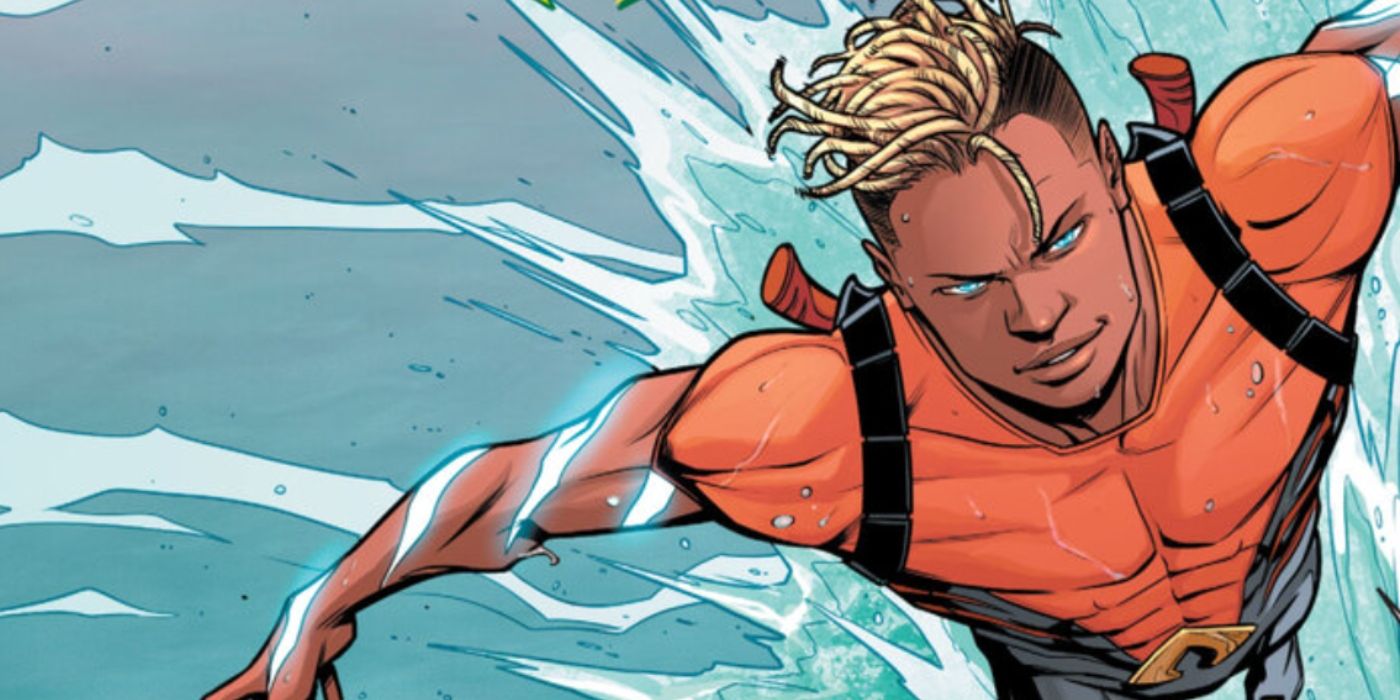Warning: The following contains spoilers for Aquamen #2, on sale now from DC Comics.
Kaldur'ahm, former Aqualad and current Aquaman, is the son of the villainous Black Manta, yet he is loyal to the Atlantean throne. Recently, his work alongside Arthur Curry's Aquaman has proven to be both helpful and difficult as Curry allied with Black Manta against an unknown threat to the entire subaquatic world. In Aquamen #2 (by Chuck Brown, Brandon Thomas, Sami Basri, Vicente Cifuentes, Adriano Lucas, and Andworld Design), the investigation leads the former Aqualad to interrogate Ocean Master, and in the process the hero unleashes a new and terrifying power: the ability to control the water within a person's body.
Kaldur's ability to control water has been his primary claim to the Aqua- name for quite a while, but his new ability shakes things up quite a bit. From an extra-canonical perspective, his controlling the blood within his opponents brings to mind an ability that originated in Avatar: The Last Airbender: Bloodbending. Demonstrated by such characters as Katara and Amon, bloodbending also allowed users to control the water inside of their opponents. Aquamen #2 draws a direct line between these characters and highlights the similarities between their abilities.
Kaldur Cruelly Waterbends Away Orm's Free Will
Ocean Master/Orm was captured in the first issue of Aquamen and is being held captive in issue #2. In his typical manner, Orm is dismissive and attempts to take charge of the situation, taunting Kaldur and refusing to answer his questions. Kaldur, however, has shown little restraint during the course of this new series. In issue #1, the new Aquaman essentially begged a sea monster to fight him and took pleasure in the ensuing battle, even though it was under Orm's control. His aggression toward this creature and his own mentor strike a sharp contrast to how he has typically handled the world around him.
When Kaldur takes control of the blood in Orm's body in the latest issue, he first takes away the Atlantean's ability to speak, preventing him from calling for help or even cooperating with the interrogation. Much like in Avatar: The Last Airbender, Kaldur's bloodbending doesn't represent a force of good, even if used by a good character. His actions almost definitely represent a downturn in the character's morality as he displays the very cruelty that he abhors.
Bloodbending's Legacy Bodes Ill for The Former Aqualad
The legacy of bloodbending doesn't have much precedent in DC Comics, but its presence in other media has not been altruistic. Bloodbending first appeared in season three of Avatar: The Last Airbender. In an episode entitled "The Puppetmaster," the Gaang comes across a waterbending refugee from the southern tribe who shows Katara some of her techniques. One of these, only possible when the moon is full, is bloodbending, wherein waterbenders can take control of the water within the bodies of others.
The Puppetmaster, Hama, was using the power of the full moon to make people walk into a cave, where she would keep them under her control. Katara used the power at the end of the episode to bring Hama down, and the young woman immediately expressed regret at her having used the technique. Similarly, in The Legend of Korra, Amon used bloodbending to take away the bending abilities of those who opposed him.
Kaldur's new ability is a physical manifestation of how much he has changed over the course of this series, and may even foreshadow a villainous turn for the character. Even though the young Aquaman showed great pity and kindness towards animals and humans in previous appearances, the use of such a cruel ability does not bode well for him or his world.



